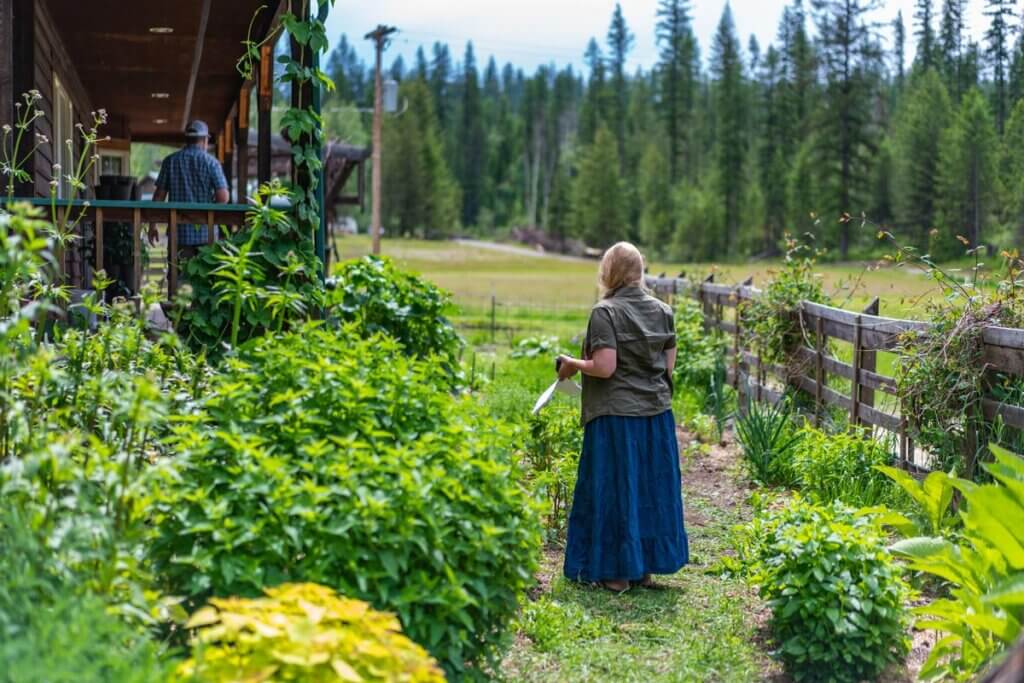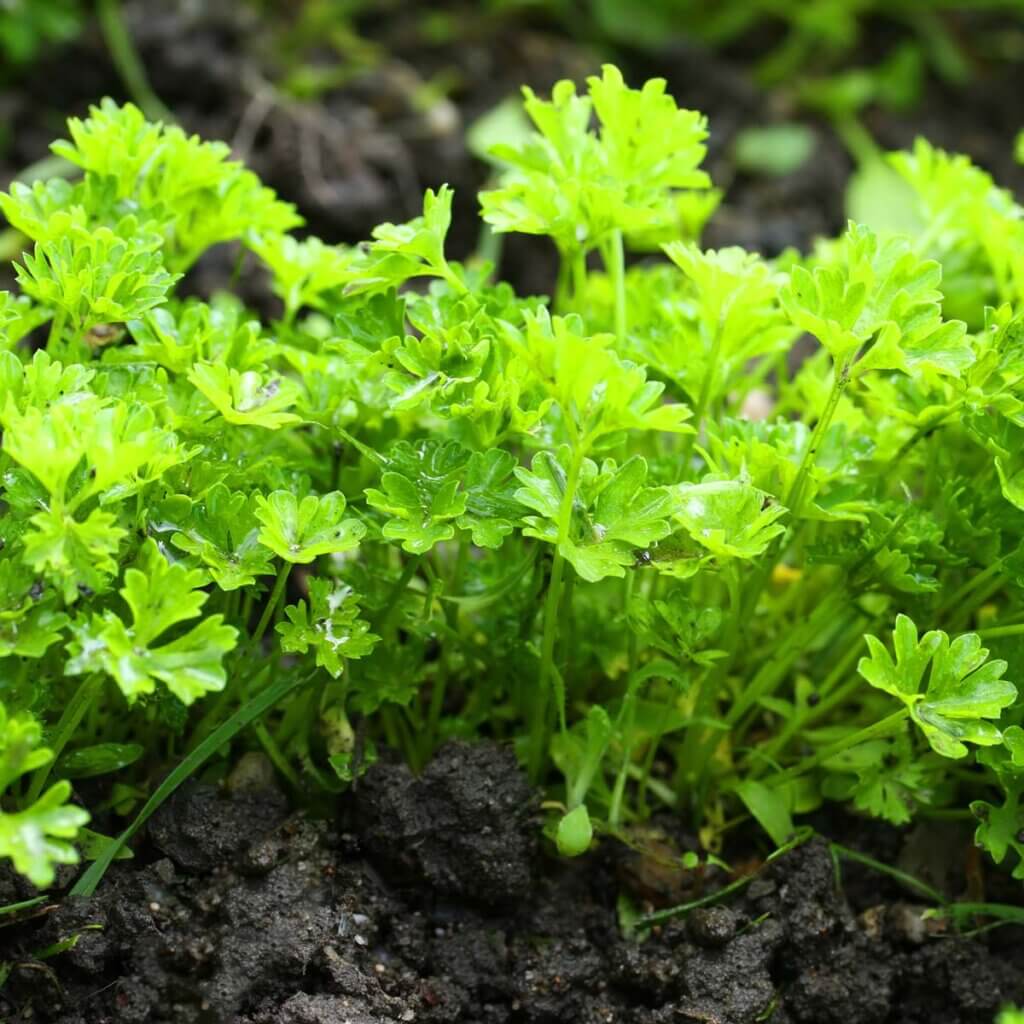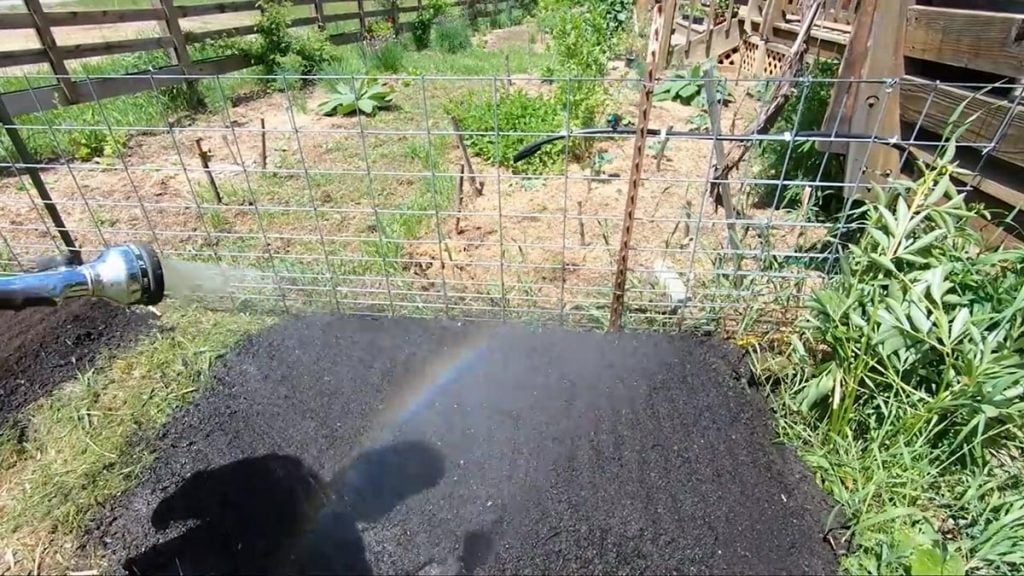Herbs, especially the parsley plant, grow easily in a home herb garden with little effort. Parsley plays a versatile role in the culinary world and is a standard herb in the American kitchen. Adding parsley to dishes intensifies the flavors of the dish and gives it an added health boost.

Learn to love growing parsley for its fresh peppery taste that you can use in your favorite recipe, from a sauce to garlic bread. And improve your health while eating a delicious salad, sauce, or meat garnished with parsley.
Why I Love Growing Parsley
Stepping into our cottage garden is truly relaxing. It’s why we put chairs out there, so we can take our morning coffee and enjoy the textures, blooms, and aromas that stimulate our senses and relax the busy mind.

You can learn the ins and outs of designing an old-fashioned cottage garden and grow your own herbs like cilantro, basil, oregano, dill, lemon balm, rosemary, and more.
You can also grow these herbs using container gardening and companion planting in the vegetable garden. With some leafy herbs, like parsley, you can even continue gardening in winter to grow greens year-round.
Each year we add to our cottage garden and learn more and more about how to preserve and use our herbs both medicinally and in our cooking.
Parsley is a culinary herb we love to grow because of its amazing health benefits. Who knew this garnish could pack a punch to boost our health and impress our taste buds?
Read on to learn all about growing parsley and discover the wonderful health qualities and culinary uses of this flavorful herb.

Varieties of Parsley
There are three main types of parsley (Petroselinum crispum). The most popular are curly parsley (also called crispum or French parsley) and Italian flat-leafed parsley (also called neapolitanum, plain, Italian, or flat parsley.)
The third variety, tuberosum, is lesser known. It’s a type of parsley grown for its roots. Also called Hamburg or turnip-rooted, it grows large, flavorful roots and edible leaves.
Here are some common varieties to purchase as seeds or plants to transplant:
- Single Italian Parsley – Requires full to part sun, rich, well-drained soil, and ample water. This herb tastes strong and flavorful. It grows beautiful flat dark green leaves and is easy to grow.
- Giant of Italy – This biennial parsley (meaning it will flower and produce seed in its second year of growth) grows to 18 inches tall, with a distinct flavor and large, flat leaves. You can easily bundle or bunch this parsley with the long stems for drying, selling, or storing.
- Menuette Parsley – This parsley variety is the only variety with fern-like leaves. The lacy, feathery leaves resemble dill. They look beautiful and delicate but prove hardy when handled, used, or stored. This variety is also biennial and takes 75 days to mature. The flavor tastes like classic parsley at the grocery store (only much better!).
- Double Curled Parsley – This frost-resistant variety grows tightly curled leaves in a deep dark green color. It retains its color well once harvested, can withstand cold and heat, and doesn’t mind repeated clippings. This is a great addition to any garden.
- Darki Curled Parsley – This curly leaf variety of parsley can tolerate a light frost. It takes 75 days to reach maturity and tastes wonderful in culinary endeavors.
- Hamburg Turnip Rooted Parsley – This parsley grows a large, edible root that tastes great in soups. It resembles parsnip. This cold-hardy, drought-tolerant root tastes sweet and nutty, with a slight celery flavor.

Health Benefits of Parsley
Parsley contains beneficial nutrients like antioxidants, vitamins K, A, C, folate, potassium, calcium, and magnesium. (Source) Many people may sidestep this herb, thinking it can only be used for culinary purposes, but consuming parsley provides significant health benefits.
- Eye Health – Parsley offers a great source of vitamin A, which promotes eye health. Just ½ cup of fresh chopped parsley provides over 100% of your daily recommendations for this vitamin. Vitamin A protects the outer layer of the eye. And the carotenoids in parsley can even help reduce the chances of developing macular degeneration. (Source)
- Bone Health – A tablespoon of fresh, chopped parsley contains more than 70% of the recommended daily value of vitamin K. Vitamin K supports bone health and blood clotting. It strengthens bones and increases bone density. (Source)
- Cancer-Fighting – Parsley contains high amounts of flavone apigenin, which studies claim to show anticancer benefits. (Source) Vitamin C and antioxidants may also help reduce the risk of cancer.
- Natural Diuretic – Parsley helps to alleviate bloating and aids in lowering blood pressure due to its diuretic properties. (Source)
- Immune Support – Since parsley contains high amounts of vitamin C and antioxidants, these lead to a healthy immune system.
To gain the health benefits from parsley, make parsley tea. Place one tablespoon of dried parsley in a mug, pour hot water over the top, cover and steep for 5-10 minutes. Add honey to taste, and enjoy!
You can also make herbal tinctures that include parsley. Tinctures concentrate herbs’ beneficial properties, allowing you to intake more potent doses. If you don’t enjoy the taste of parsley, you can dry parsley, make it into a powder and make herbal capsules.
It’s important to note that I am not a certified medical practitioner. This post is not intended to diagnose or treat but is for informational purposes only. Please contact your healthcare professional before introducing new herbal and natural remedies into your wellness routine.

Ways to Use Parsley
So often, we see parsley used as a garnish on the side of our plates at diners, but parsley is seriously underrated. Parsley offers flavors of citrus or pepper and is versatile in its application.
You can add it to recipes toward the beginning of the cooking cycle and allow the flavors to blend with the food and other spices, or you can add fresh parsley at the end of your dish to add color and keep its unique fresh taste.
Homesteading Hack: The stems of both the flat and curly leaf varieties are edible and contain even more flavor than the leaves.
- Herb Blends – Parsley enhances a variety of homemade herb blends such as our poultry seasoning recipe, Italian seasoning, ranch seasoning, homemade garlic salt, and more.
- Salads & Dressings – Parsley is one of the main ingredients in tabbouleh, a traditional Middle Eastern salad. Add chopped fresh parsley to potato, macaroni, tuna, chicken, or green salad or use it fresh or dried in this homemade vinaigrette dressing.
- Soups – Sprinkle fresh parsley on bread soup, hearty beef stew, or white bean chicken chili before serving. Homesteading Hack: Make a bundle of stems and tie them with a string. Add the bundle to soups to flavor the broth, then discard the bundle of stems before serving.
- Italian Dishes – Fresh or dried parsley complements a variety of Italian dishes like this raw marinara sauce, carrot top pesto, alfredo, or pizza pepper poppers
- Breakfast – Sprinkle parsley over scrambled eggs or sweet pepper hash for added nutrition at breakfast.
Homesteading Hack: If you want to gain the health benefits of parsley, but don’t plan to use it in a meal, try adding it to your DIY homemade greens powder and use it in a green smoothie recipe for boosting immunity.

How to Grow Parsley
Parsley is a biennial plant classified as Umbelliferae, the carrot and root family. It develops its leaves to harvest in the first year. In the second year, it flowers and seeds.
Most people treat it as an annual plant and fully harvest parsley at the end of the growing season the first year. Parsley can withstand direct sow methods or transplant methods. Since it is slow to germinate, learn when to start seeds indoors and how to start seeds indoors.
Several varieties of parsley can make choosing which seeds or plants to buy confusing. Learn how to choose the best vegetable seeds for your garden and how to read seed packets to help you make your selection.

Planting Parsley
- Seeds/Transplants – You can sow the seeds directly into the soil in early spring, even as early as two weeks before the last frost date. Plant the seeds ¼ inch deep. Keep the soil moist around the seeds. You can also start parsley indoors and transplant them in early spring. Just be careful not to disturb the taproot. Some people soak the seeds overnight before direct sowing to help speed up germination.
- Spacing – Plant individual plants at least 5 inches apart, depending on the variety. If you plant them in rows, you can plant them closer together but leave at least 9 inches between the rows.
- Sun – Parsley prefers full sun, but certain varieties can tolerate some shade.
- Soil – Parsley likes nutrient-rich, well-draining soil.
- Succession Planting – You can plant several rounds of parsley to create a continual harvest. Plant about every two weeks throughout the spring and summer.
- Companion Planting – Plant parsley near asparagus plants to repel asparagus beetles.

Growing Parsley
- Watering – Keep the seeds moist for the first couple of weeks. After that, regularly water the parsley. They can withstand short periods of drought.
- Mulch – You can add mulch around your plants to help keep moisture in and to keep the soil from becoming compacted. This also helps keep the soil and roots cooler during the hot summer months.
- Fertilize – You can side-dress parsley with homemade compost or compost tea fertilizer once or twice a growing season if needed.
Harvesting Parsley
- Clipping – You can repeatedly clip parsley throughout its growing season. Parsley will continue to grow after cutting.
- Wintering Over – Most parsley can withstand light to heavy frost. Though this doesn’t work well for us and our climate, you can add a heavy layer of mulch to help the plant survive the winter. Luckily, parsley does not make the list of crops that will NOT survive a frost. In areas with mild winters, you can sow parsley in the fall to grow through the winter.
- Harvesting – At the end of the growing season, you can cut the plants all the way down to harvest all the leaves.
- Storing – After clipping your parsley, wash it, pat it dry, and store it in a sealed container with a damp paper towel.

Preserving Parsley
After growing and harvesting parsley, try different methods for preserving parsley to enjoy it all year long.
- Freeze Drying – You can use a freeze dryer to preserve parsley. It will taste like fresh parsley when you reconstitute it. Learn the difference between freeze-dried and dehydrated foods to decide what is best for you.
- Freezing – You can freeze herbs like parsley in olive oil, lemon juice, or water in ice cube trays.
- Drying – Learn how to dry fresh herbs (oven, dehydrator, or hanging). However, keep in mind that though parsley will dehydrate well, it will lose much of its flavor. If you decide to dehydrate parsley, do it on the lowest heat setting possible.
- Preserving in Salt – This is a great option for preserving parsley. It preserves well in salt and maintains its delicious flavor. Learn two ways to preserve herbs in salt here.
As you dabble in growing and harvesting herbs, we hope you take it to the next step to preserve your herbs for culinary dishes throughout the year. We would like to offer you this FREE convenient downloadable PDF on Preserving Culinary Herbs.



















